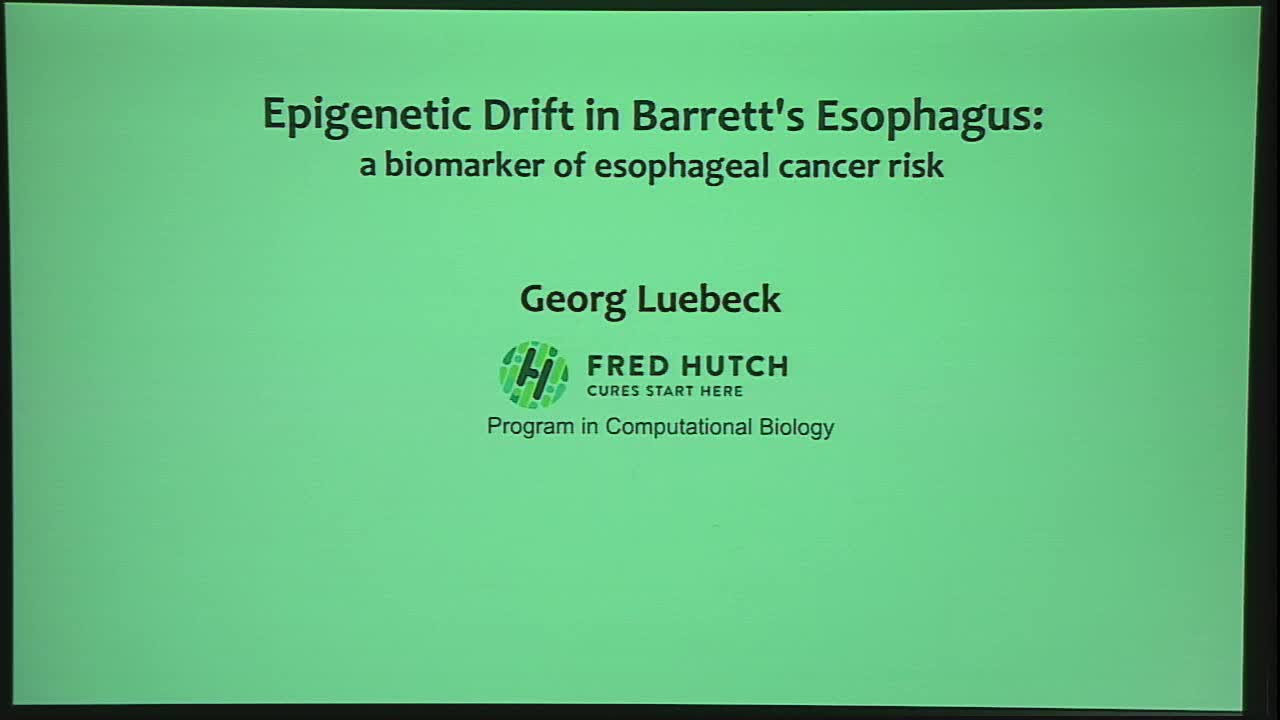Epigenetic Drift in Barrett's Esophagus: a biomarker of esophageal cancer risk
Presenter
September 14, 2017
Keywords:
- Epigenetic Drift, DNA methylation, Barrett’s esophagus, Cancer Evolution
Abstract
Biomarkers that drift differentially with age between normal and premalignant tissues, such as Barrett’s esophagus (BE), have the potential to improve the assessment of a patient’s cancer risk by providing quantitative information about how long a patient has lived with the precursor (i.e., dwell time). In the case of BE, which is a metaplastic precursor to esophageal adenocarcinoma (EAC), such biomarkers would be particularly useful because EAC risk may change with BE dwell time and it is generally not known how long a patient has lived with BE when a patient is first diagnosed with this condition. In this study we first describe a statistical analysis of DNA methylation data (both cross-sectional and longitudinal) derived from tissue samples from 50 BE patients to identify and validate a set of 67 CpG dinucleotides in 51 CpG islands that undergo age-related methylomic drift. Next, we describe how this information can be used to estimate a patient’s BE dwell time. We introduce a Bayesian model that incorporates longitudinal methylomic drift rates, patient age, and methylation data from individually paired BE and normal squamous tissue samples to estimate patient-specific BE onset times. Our application of the model to 30 sporadic BE patients’ methylomic profiles first exposes a wide heterogeneity in patient-specific BE onset times. Furthermore, independent application of this method to a cohort of 22 familial BE (FBE) patients reveals signifi- cantly earlier mean BE onset times. Our analysis supports the conjecture that differential methylomic drift occurs in BE (relative to normal squamous tissue) and hence allows quantitative estimation of the time that a BE patient has lived with BE.
